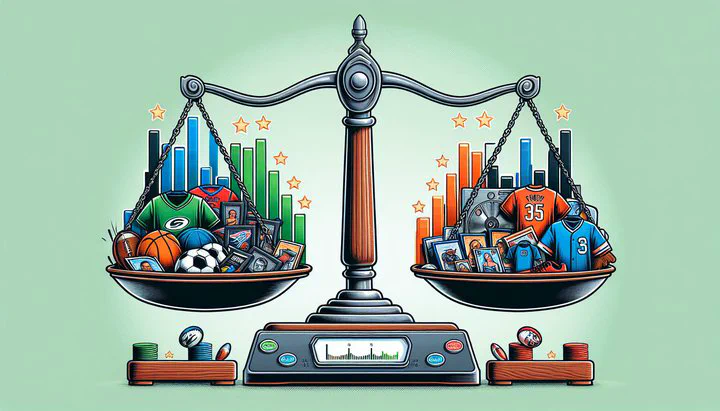Understanding the Decline in eBay Buyer Feedback

Exploring the Decline in Feedback
Have you seen fewer buyers leaving feedback on eBay since August? You’re not alone. Many sellers are noticing this trend, and it’s raising questions in the collectibles community. Let’s dive into what’s happening and why you might be experiencing a steep decline in numbers leaving feedback.
Lately, there’s been a big drop in how many buyers leave feedback. While exact numbers can vary, some sellers report a decline of up to 30% compared to previous months. This change is unsettling for those who rely on feedback to build their reputation. But what could be causing this decline? One possibility is a shift in buyer behavior. As more purchases happen on mobile devices, buyers might skip leaving feedback simply because it’s not as convenient. Additionally, changes in eBay’s policies or user interface could be contributing factors.
It’s also possible that the general buying experience on eBay has evolved. With faster shipping and easier returns, buyers might feel less inclined to leave feedback unless their experience was exceptionally positive or negative. Some sellers suggest that eBay’s increased focus on protecting buyers might lead them to feel feedback is no longer necessary. Whatever the reason, understanding the decline in eBay buyer feedback since August is crucial for sellers navigating this new landscape.
By recognizing these trends, you can better adapt your strategies to encourage feedback from your buyers. In the next sections, we’ll explore how this decline impacts sellers and share practical tips to boost your feedback rates. Have you noticed this in your sales? Share your stories in the comments!
Impact on Sellers and Sales
As a seller, you know how important feedback is for your online reputation. The decline in eBay buyer feedback since August can have a significant impact on your business. Feedback isn’t just words; it’s a trust sign for new buyers. When there’s a huge decline in numbers leaving feedback, it can affect how new customers view your store.
The relationship between numbers of sales vs numbers of feedback is crucial. Typically, more sales mean more feedback, which boosts your reputation. When feedback declines, even if sales are steady, it can appear that buyers aren’t satisfied, which might not be true. This perception can make new buyers hesitant to purchase from you, worrying that a lack of feedback indicates poor service or product quality.
Without enough feedback, reaching and maintaining a top-rated seller status becomes more challenging. This status is critical for gaining more visibility and trust on eBay, which can directly influence your sales. A steep decline in numbers leaving feedback can lower your chances of being promoted by eBay’s algorithm, ultimately impacting your sales and growth.
Moreover, feedback is a valuable tool for improving your business. It provides insights into what you’re doing right and what needs improvement. When feedback is scarce, you miss out on this important information, making it harder to enhance your offerings and customer service. Understanding the decline in eBay buyer feedback since August is essential, as adapting to these changes can help maintain your reputation and keep your sales up.
In the next section, we’ll share strategies to encourage more feedback from your buyers, ensuring you can continue to build trust and grow your business. Stay tuned for actionable tips to turn this challenge into an opportunity.
Strategies to Encourage Feedback
For eBay sellers, feedback is like finding treasure. It boosts your reputation and helps others trust your store. But with the decline in eBay buyer feedback since August, you might need to try some new strategies to encourage buyers to leave their thoughts. Here are some tips to help you get more feedback.
First, think about the timing. Sending a friendly reminder to leave feedback after a buyer receives their item can work wonders. Check your settings to leave feedback to buyers once tracking is updated. This way, you can thank them for their purchase and gently ask if they’d consider leaving feedback. Timing your request when the excitement of receiving the package is fresh can increase the chances of them responding positively.
Communication is key. Providing excellent customer service before and after the sale can make a big difference. Respond quickly to any questions or concerns, and let your buyers know you’re there to help. This level of service often encourages buyers to leave positive feedback because they appreciate the effort you’ve made to ensure their buying experience was smooth and pleasant.
Another approach is to make the feedback process as easy as possible. You can include a small note with your package thanking the buyer and kindly requesting feedback. Mention how important it is for your business and how much you’d appreciate their support. A personal touch can go a long way in encouraging buyers to take that extra step.
By focusing on these strategies, you can help counter the steep decline in numbers leaving feedback. Remember, the goal is to make buyers feel valued and appreciated, which naturally leads to more feedback. Implementing these tips can help you maintain and even improve your reputation, despite the current challenges. Keep experimenting with different approaches to see what works best for your store.
By understanding the decline in buyer feedback and using these strategies, you can keep your eBay store thriving. Try these tips and let us know how they work for you! Join the conversation and share your own strategies in the comments or visit our community subreddits for more ideas.